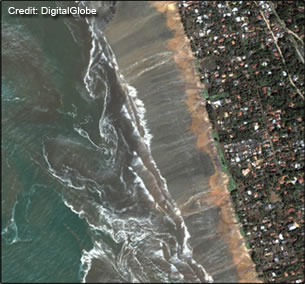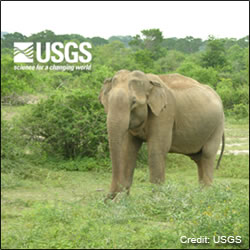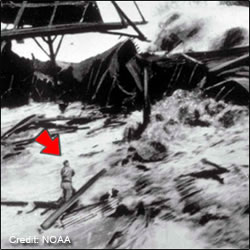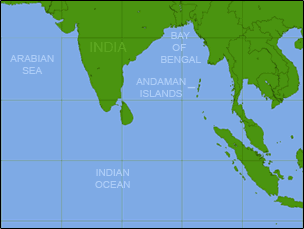Hundreds of thousands of people died in the December 26, 2004 Indian Ocean tsunami. But as described in these news reports, others saw warning signs, and escaped with their lives.
Girl saves tourists after raising tsunami warning

Thousands died on the beaches of Thailand in the December 2004 tsunami. But a 10-year-old British girl saved more than 100 people because she had just studied the killer waves in school. When the sea suddenly began to boil, then pulled away from the resort she was visiting, leaving fish and boats stranded high and dry, Tilly Smith recognized that a tsunami was approaching. Fortunately, her frantic warnings were heeded, and the beach was evacuated just moments before the huge waves crashed ashore.
Kalutara Beach Detail
Imagery collected December 26, 2004. Description: Receding waters and beach damage from tsunami


